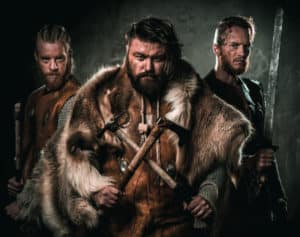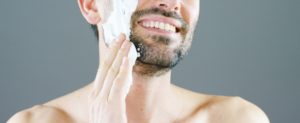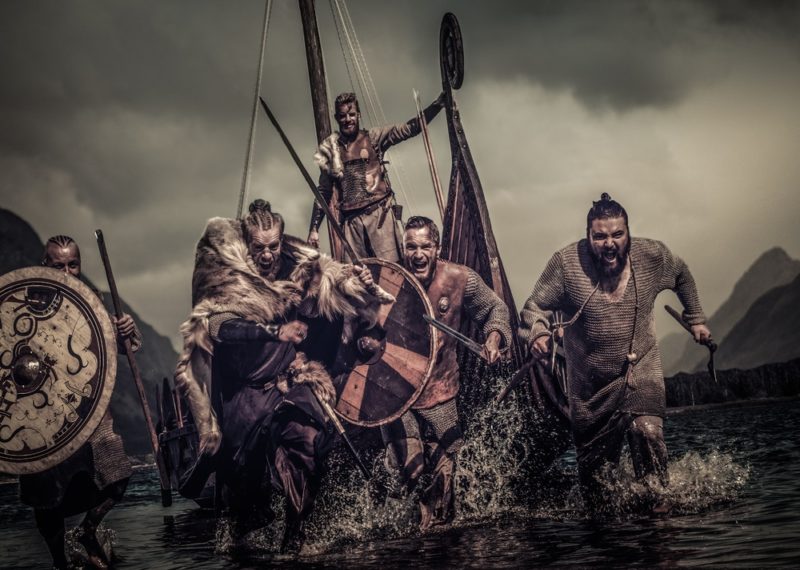Anyone with a full beard has definitely heard the term “Viking” at some point in their life. The ironic part is that the majority of bearded men undoubtedly view that as a compliment. It’s unclear when the minor fixation with these bearded warriors first began, but it appears that their ubiquity in contemporary culture is just going up.
Beards have existed for a very, very, very long period. Powerful people have worn beards throughout a plethora of eras and cultures, even though they have witnessed the ebb and flow of fashion fads.

Who Are the Vikings?
Vikings traveled throughout Western and Eastern Europe from roughly 800 AD to 1066. They had a reputation for being ruthless, invading and conquering forces. The Scandinavian nations of Denmark, Sweden, and Norway are where the majority of people of Viking ancestry were born.
Another skill the Vikings were renowned for was building ships of all sizes and designs. The Vikings’ use of these ships was fundamental to their way of life. With the aid of the ships, they were able to travel across oceans for exploration and trade. Additionally, they offered the Scandinavian soldiers a tactical advantage.
In addition to their strength in battle, highly developed ships, and aggressive disposition, the Vikings were renowned for their hair and beards.

What Did the Vikings Look Like?
Another stereotype of Vikings is that of unclean, big, burly guys. This is not entirely accurate. In Viking society, men and women were both accustomed to maintaining daily hygiene. While this does not imply that they took daily baths, they did take care of their hair and skin. In addition, they were typically shorter than modern men from the same area. This is due to the simple fact that modern society lacks adequate food and healthcare.
According to a telegraph.co.uk article, Scandinavian archaeologists are eager to point out that the representations of Vikings conflict with their findings. One of the first illusions to be refuted is that of unclean, unruly beard hair and head hair, as grooming products such as tweezers and combs, as well as toothpicks and tools for cleaning under the nails, are among the most frequently discovered items in Viking burial sites. It is currently thought that Vikings were possibly significantly more clean-cut and well-groomed than their British rivals.
In reality, most Vikings carried combs along with other daily necessities as basic items. They were used on their beard and head and were typically made of bone. The hair and beard were kept tidy and free of any grime, grit, or insects with these handmade grooming products.
The vast majority of Viking men had facial hair. They weren’t necessarily large, unruly beards though. Despite being long, their hair was usually kept in a rather formal way.
Overall, the Vikings had well-groomed hair and beards, as can be seen in images. The men wore short hair on the back of their heads and had long fringes.
However, there is some good news: Vikings did wear the well-known combat braids. To keep hair off of the faces of soldiers during combat, braids were frequently worn underneath helmets.
Face it, having some braids flowing down the back of your head and some gnarly beard hair is nothing short of fantastic. When getting ready for combat, Vikings experienced the same emotions.
Four Tips to Achieve Beard Growth Like the Vikings
Are you looking for a few tips on how to achieve hair growth like the Vikings? The following factors may have contributed to how the Vikings looked after their beards during their reign:
- Eat a lot of fish
- Brush out your beard with beard oil
- Clean your beard regularly
- Trim your beard every now and again
Eat a Lot of Fish
Any Viking’s diet would likely consist largely of seafood. His diet would primarily be made up of easily sorted ocean items such as crabs, oysters, and lobsters, as well as a wider variety of newly caught fish. These foods are high in iron, which would aid in the hair growth and maintenance of his beard. A Viking who lived on land would eat greens, liver, and vegetables that were also an excellent source of protein to help his beard grow.

Brush Out Your Beard with Beard Oil
It is thought that essential oils were frequently used to maintain beards even in the Viking era. We are currently spoiled for choice when it comes to the numerous oils and tonic scents that are easily accessible online for our beards. However, the options back in the Viking era were not very good. Fish oils (oh no, imagine that fish smell!) and oils made from plant extracts are thought to have been the oils that may have been utilized the most frequently.
Thank goodness, those days of the Viking age may now be consigned to history, where they belong. These days, premium ingredients such as argan oil and jojoba oil are used to keep beards soft, and it smells amazing! This also helps to prevent dry skin underneath the beard.
Clean Your Beard Regularly
Although they lived roguish, bloody lives, Vikings were actually quite tidy and immaculate men. In order to maintain their manly Viking beards, those who possessed facial hair would regularly wash any dirt, nasty food spillages, and grime practically every day. Men’s grooming and beard care was taken very seriously by Viking men.
Trim Your Beard Every Now and Again
To keep things in good form, Vikings would frequently comb or brush through their magnificent beards using combs that were frequently crafted from deer antlers and animal bones. Additionally, it’s thought that Viking wives were skilled barbers when it came to trimming beards. Women would frequently assist in giving their man’s beard a nice trim every so often. It also doesn’t help to get rid of any split ends.
Did Vikings Change the Style of Their Beard Hair?
It’s crucial to realize that the Viking Age spanned several centuries, during which time beard care, hairstyle, and fashion all changed significantly. It seems that beard styles and mustaches may have been a way for people to express themselves, just like they are today. Furthermore, it appears that most evidence points to males with long hair and big beards during the early Viking Age; however, a lot of the early Norse historical figures actually seem to depict relatively short beards.
Nevertheless, beard style and length evolved through time. The Vikings were very similar to modern males in that regard. They kept their facial hair and beards well-groomed by oiling, trimming, waxing, and plaiting them. In slightly later paintings, Viking males are shown with intricate, frequently curled, waxed mustaches.
A few also curled parts of their mustache upward with wax to match their sideburns, and some had long beards that were oiled and braided. You could use beard balm and beard oil to achieve this look. Others had a long mustache connected to mutton chops instead of beards. While others, as you might expect, were completely beardless or had quite long mustaches.
FAQs
How Can You Grow Your Beard Like the Vikings?
Even while only one in 33 males can claim to be directly descended from a Viking, that doesn’t mean you can’t look like one! The roughest of Nordic beards are doable with the right equipment and knowledge. Here are the materials you’ll need to create the ideal masculine Viking appearance:
- Beard oil
- Beard comb
- Beard balm
Why Was the Beard a Sign of Masculinity During the Viking Era?
The growth of facial hair only started taking place throughout the Viking era in the early 20s. This was because of a lot of variables, but the diet was the most important one. During their teen years, the more privileged warrior class ate a diet largely composed of meat and few vegetables. Summer vegetables contained leafy greens high in iron, and meat would have included offal, particularly the iron-rich liver. The Vikings, who lived mostly by the sea, also ate a lot of iron-rich foods such as fish and, in particular, oysters, which they adored. As a result, having a beard not only indicated a guy was a well-fed warrior class member but also a sign of maturity.
Men’s grooming habits are the other important aspect. Modern soaps and shampoos result in damage caused by harsh chemicals removing the natural oils. The Vikings maintained their beards, but they didn’t use modern soaps; instead, they utilized combs as part of the bathing procedure, running them through their damp hair when they were getting ready in the morning.
This assisted in removing any dirt or pests in addition to smoothing and arranging the beard, mustache, and hair. All of the Germanic tribes used soap, but more for bleaching than for washing. If you don’t want to damage your beard, look for a great product that contains nourishing ingredients such as argan oil to hydrate your beard and the skin underneath it.
Which Norse Gods Had Beards?
Royal names such as Harald Fairhair, who must have had a fine head of hair, and Sweyn Forkbeard, whose beard was likely divided in two, demonstrate the importance the Viking man placed on his beard and hair.
All but one of the Norse gods are depicted and drawn throughout Norse history as having beards, such as Odin and Thor. The lone exception is Loki, who is frequently linked to bad behavior and the shadowy aspect of humanity. Loki is well-known for having transformed into a mare to be impregnated by the stallion Svailfari. This scandalous act occurred at a time when the feminization of men was highly condemned. In addition to being the only Norse character commonly depicted without a beard, Loki represents the exact opposite of what a man should want to be.
Bring Out Your Inner Viking Warrior!
The Norse sagas demonstrate how important beards and hair were to the Vikings as a statement of individuality. In addition to their knives and swords, Vikings often wore combs on their belts. Archaeologists claim that Vikings frequently carried their combs to their graves. A beard was not just a fact of life for the Vikings, much like it is for certain men now; it was a significant statement that represented virility, status, selfhood, and strength. Viking beard oil wasn’t as advanced as modern beard care products in terms of scent and ingredients, but it kept their beards healthy, soft, and smooth.





